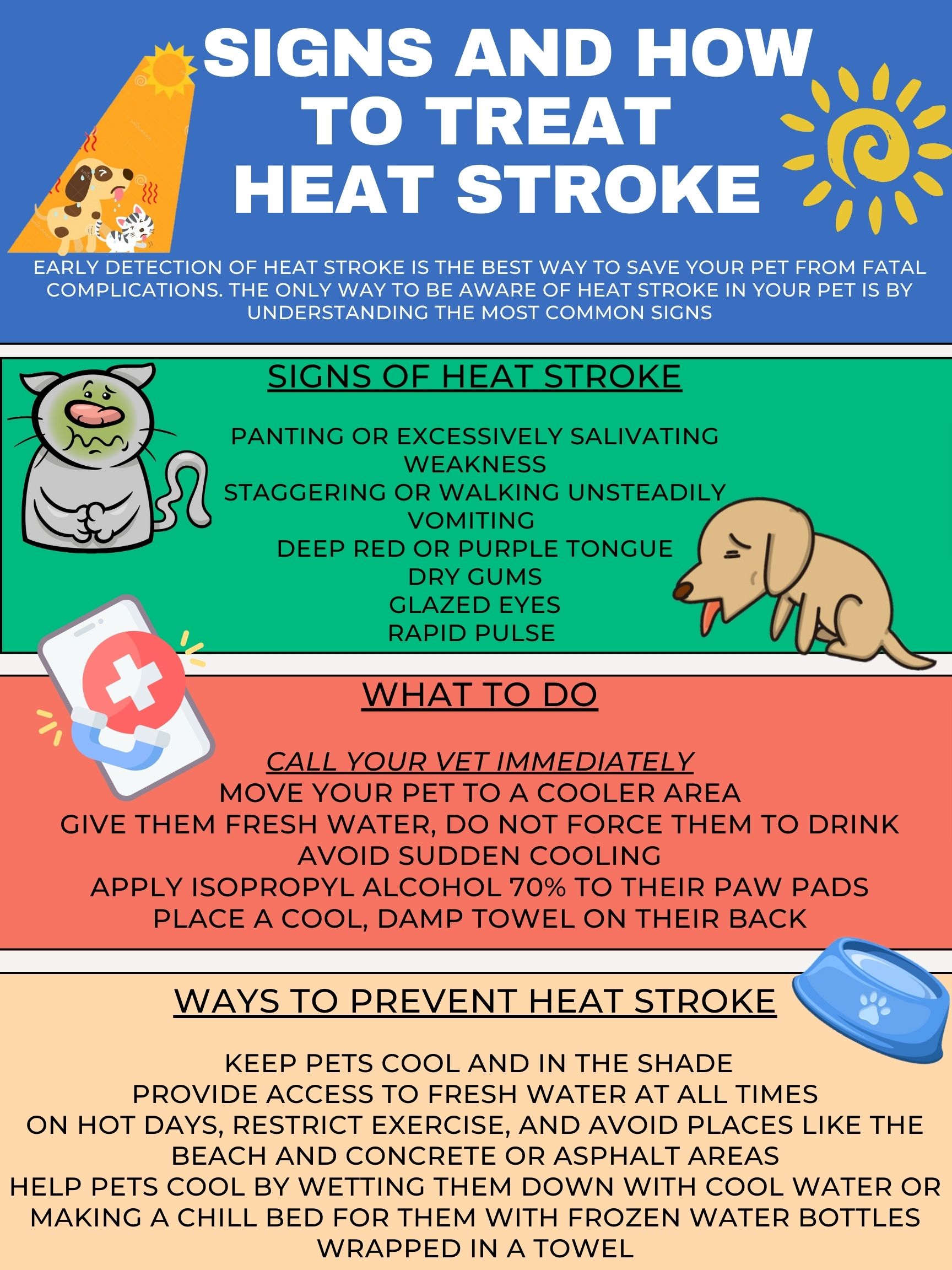Heat stroke can be a life-threatening condition for both humans and pets. As the temperature rises, it's crucial to be aware of the signs of heat stroke and know how to respond promptly. In this blog post, we will explore the signs of heat stroke in pets and provide essential tips on how to treat it. By understanding the warning signs and taking appropriate action, you can help save your beloved pet from potentially fatal complications.
Recognizing the Signs of Heat Stroke:
The first step in dealing with heat stroke is recognizing the signs. Here are some common indicators that your pet may be experiencing heat stroke:
- Panting or Excessively Salivating: Dogs and cats regulate their body temperature by panting. If you notice your pet panting excessively or drooling excessively, it could be a sign of heat stroke.
- Weakness: Heat stroke can cause weakness and lethargy in pets. If your usually active pet seems unusually tired or weak, it's crucial to pay attention and investigate further.
- Staggering or Walking Unsteadily: Pets suffering from heat stroke may have trouble maintaining their balance and coordination. If you notice your pet walking unsteadily or staggering, it's a clear indication of a problem.
- Vomiting: Heat stroke can lead to nausea and vomiting in pets. If your pet vomits repeatedly or exhibits signs of an upset stomach, it's essential to consider heat stroke as a potential cause.
- Deep Red or Purple Tongue: One of the visible signs of heat stroke is a deep red or purple tongue. If your pet's tongue appears unusually dark or discolored, it could be a sign of overheating.
- Dry Gums: Normally, a healthy pet will have moist gums. Heat stroke can cause dehydration, leading to dry and sticky gums. If you observe this symptom, it's crucial to take action promptly.
- Glazed Eyes: Heat stroke can cause a glazed or dazed look in your pet's eyes. If their eyes appear unfocused or glassy, it's important to address the situation urgently.
- Rapid Pulse: A rapid or irregular heartbeat is another indication of heat stroke. You can check your pet's pulse by gently placing your hand on their chest near the heart. If the heartbeat feels significantly faster than usual, seek immediate veterinary attention.
Treating Heat Stroke in Pets
If you suspect your pet is experiencing heat stroke, it's crucial to act quickly. Follow these steps to provide immediate care:
- Call Your Vet Immediately: Contact your veterinarian or an emergency veterinary clinic as soon as you suspect heat stroke. They can guide you through the necessary steps and provide further instructions.
- Move Your Pet to a Cooler Area: Transfer your pet to a cool and shaded location. Air conditioning or a well-ventilated space is ideal for lowering their body temperature.
- Offer Fresh Water: Allow your pet access to fresh water, but do not force them to drink. Cooling the body gradually is essential to prevent further complications.
- Avoid Sudden Cooling: While it may be tempting to submerge your pet in ice-cold water, it's important to avoid sudden cooling. Drastic temperature changes can cause shock. Instead, focus on gradually lowering their body temperature.
- Apply Isopropyl Alcohol 70% to Paw Pads: Wet a cloth or cotton ball with isopropyl alcohol (70%) and gently rub it on your pet's paw pads. This can help dissipate heat and promote cooling.
- Place a Cool, Damp Towel on Their Back: You can also place a cool, damp towel on your pet's back to help regulate their body temperature. Ensure the towel is not too cold, as extreme cold can be detrimental.
Preventing Heat Stroke in Pets
Prevention is always better than cure. Here are some measures you can take to prevent heat stroke in your pets:
- Keep Pets Cool and in the Shade: Provide your pets with a cool and shaded area to relax. Indoors with air conditioning or a well-ventilated outdoor space can help keep them comfortable during hot weather.
- Provide Access to Fresh Water: Make sure your pet has access to fresh water at all times. Check the water bowl regularly to ensure it is clean and refilled as needed.
- Restrict Exercise on Hot Days: On scorching days, limit your pet's exercise and avoid activities that can lead to overheating. Avoid taking them to places like the beach, where they might be exposed to excessive heat from the sand or pavement.
- Help Pets Cool Down: Wetting your pets with cool water or creating a chill bed with frozen water bottles wrapped in a towel can help them stay cool and comfortable.
By being vigilant and proactive, you can significantly reduce the risk of heat stroke in your pets. Recognizing the signs and knowing how to respond promptly can make all the difference in their well-being and potentially save their lives.

Remember, if you suspect your pet is experiencing heat stroke, always consult a veterinarian for professional guidance and treatment.

